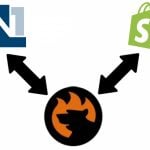How To Start An E-Commerce Business Without Screwing It Up in 2025

Starting a new e-commerce business may be frustrating when you do that for the first time. Especially when it takes place during economic recessions and crises. But don’t be afraid to get your feet wet. If the overall uncertainty frightens you, we know how to smooth the edges. This most in-depth guide will help you learn how to start an e-commerce business without screwing it up in 2025. We offer a list of steps to start a new online enterprise. Our guide includes lots of groundbreaking strategies and bright examples of success and failure.
You will learn what e-commerce type to choose and which e-commerce model is more suitable for your business case. We will assist you in defining your products and services, choosing your company name, conducting basic market research, and writing your first business plan. This article also sheds light on how to register an e-commerce business in the United States, United Kingdom, and European Union. After that, we focus on the selection of sales channels and explain what steps are necessary to create a fully functional e-commerce website. You will also learn the basic marketing steps essential to start an online business from scratch.

Table of contents
How To Start An E-Commerce Business Without Screwing It: Basic Steps
Although the next few years don’t look optimistic for opening a new e-commerce business, you can harness the economic uncertainty. The recession already keeps people away from spending extra money. It means that customers buy fewer goods. On the other hand, your potential competitors don’t want to spend their savings too. So there is more space on the market. Every cloud has a silver lining, and the ongoing crisis is not an exception.
Below, you will find a few basic steps to help you establish your e-commerce company during the economic recession of 2023 and 2024 (we sincerely hope it won’t last longer than that but it’s better to prepare for the worst-case scenario). So, how to start an online e-commerce business during the crisis?
You need to do all the same things that you would do in more favorable conditions:
- Define your business model;
- Choose your products and services;
- Select your company name;
- Conduct market research;
- Create a business plan;
- Register your company;
- Choose your sales channels
- Create an e-commerce website;
- Purchase equipment;
- Develop a marketing strategy;
- Launch your store and keep it functioning.
Everything is basically the same, but!
Since opening an e-commerce business during a recession is associated with higher risks, you always need to keep this aspect in mind. And, of course, pay more attention to TCO.
Let’s be more specific on each step.
Choose your e-commerce model
Do you already have an idea of how to start an e-commerce business? No?
Don’t worry, you need to choose your e-commerce model first. Would you like to work with end customers in the retail segment or would you prefer to become a wholesaler? Or, perhaps, you want to create a platform where other market players interact with one another?
Think about the following four basic types of e-commerce:
- B2C or business-to-customer is a common business model, in which a business sells directly to a consumer. It can be your local flower boutique where you ordered a stunning bouquet last time, a producer of peanut butter that offers 12 different flavors of this highly-nutritious paste online, or an international fashion store, like ASOS, where you navigate to the storefront in your browser, place an order, and get the desired product as soon as possible.

- B2B or business-to-business is another standard business model where businesses sell products or services to other businesses. For instance, it is can be an extension provider’s storefront where you will purchase modules for your future e-commerce store or a huge marketplace in the agricultural segment.
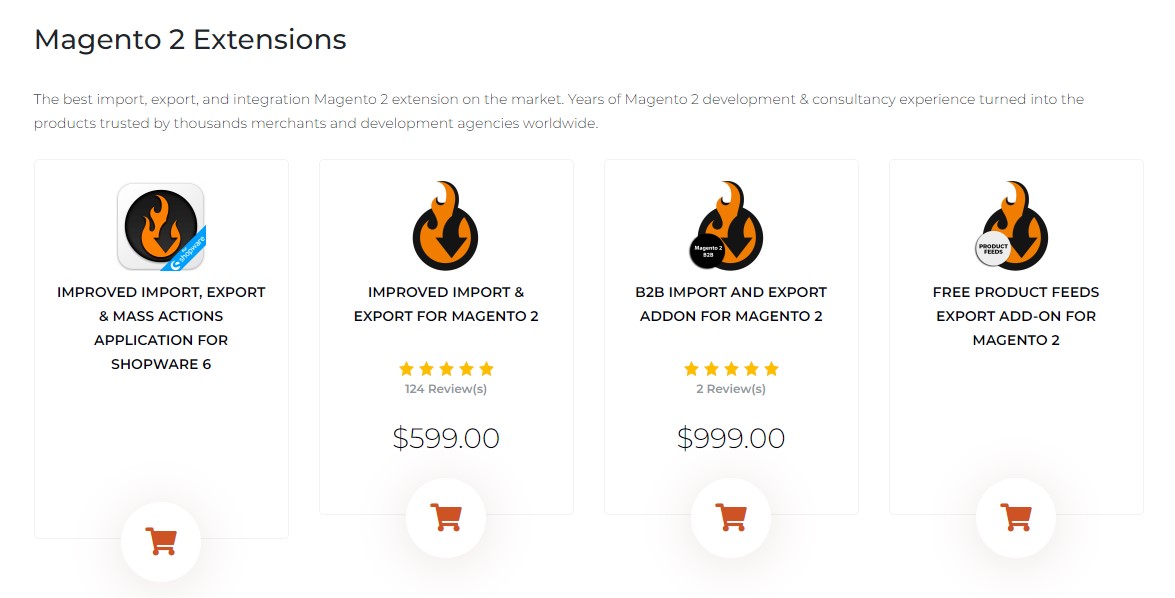
- C2C or customer-to-customer is a business model where things become more complicated. Instead of selling goods, you provide customers with the opportunity to do so. Of course, you’ve heard about Craigslist, Etsy, or eBay or even purchased something there. In this model, your earnings come from the fees you charge from customers who sell on your platform or use your services, such as paid ads.

- C2B or customer-to-business is another interesting way to start an e-commerce business, especially during a crisis. Platforms like Upwork or Fiverr successfully adopted this business model. If you are not familiar with this company, it enables businesses to hire freelancers. And since every recession is associated with a growing unemployment rate, freelance platforms may become a good opportunity for people to find new sources of income. Businesses, in turn, are interested in this module since working with freelancers may lead to a significant decrease in expenditures (you can hire a professional for a short-term project instead of keeping them in your core team).
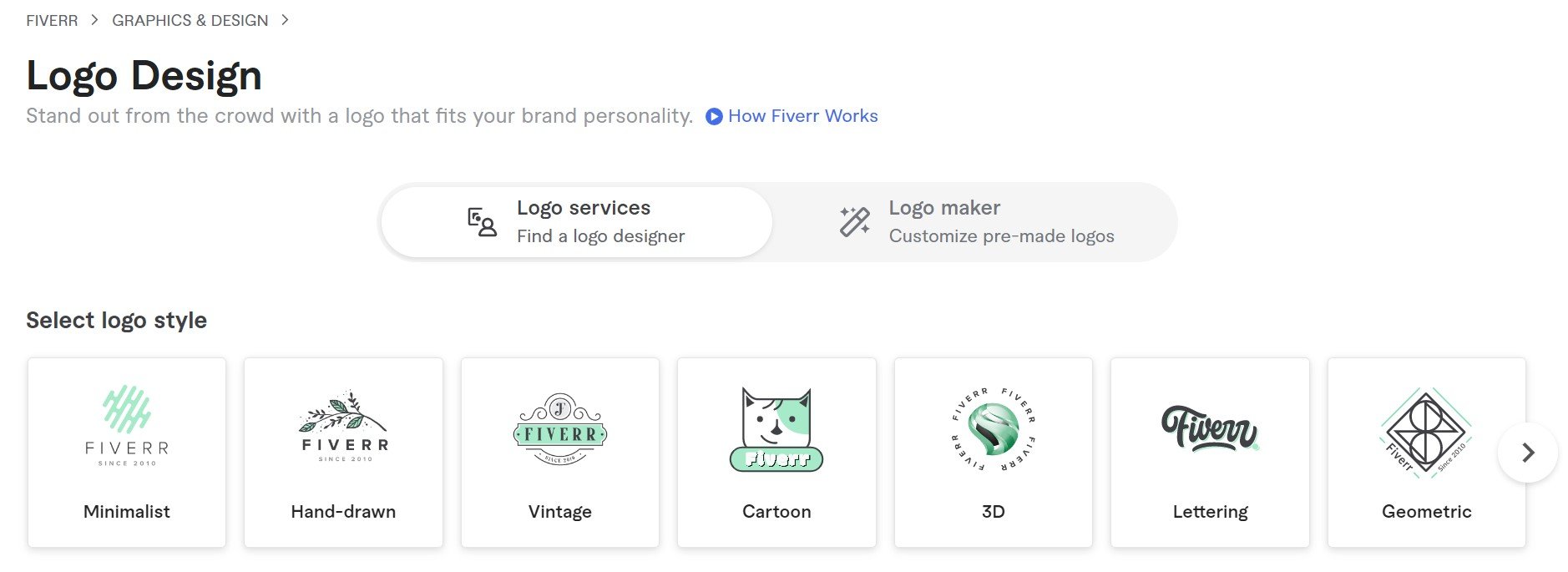
As you can see, each approach is unique and has multiple implementations. However, the e-commerce space today is full of competition, so you need to be careful in selecting your business model during the economic recession. Conduct research and try to find a vacant niche. Note that each type is tightly connected to choosing a product or service.
But let’s return to our mutton and explore e-commerce models from another angle. Below, you can see a list of other ways to run an online storefront and its brands:
- Retail: This business model is associated with most B2C e-commerce websites that are not producers of goods. A retail e-commerce model is when a business sells products directly to consumers, at a price that includes a markup above the cost of the goods. Such businesses purchase items from wholesalers and/or straight from manufacturers. At the same time, a producer of goods can have wholesale and retail websites with the same catalog but different prices. Walmart and Amazon are among the biggest retailers.
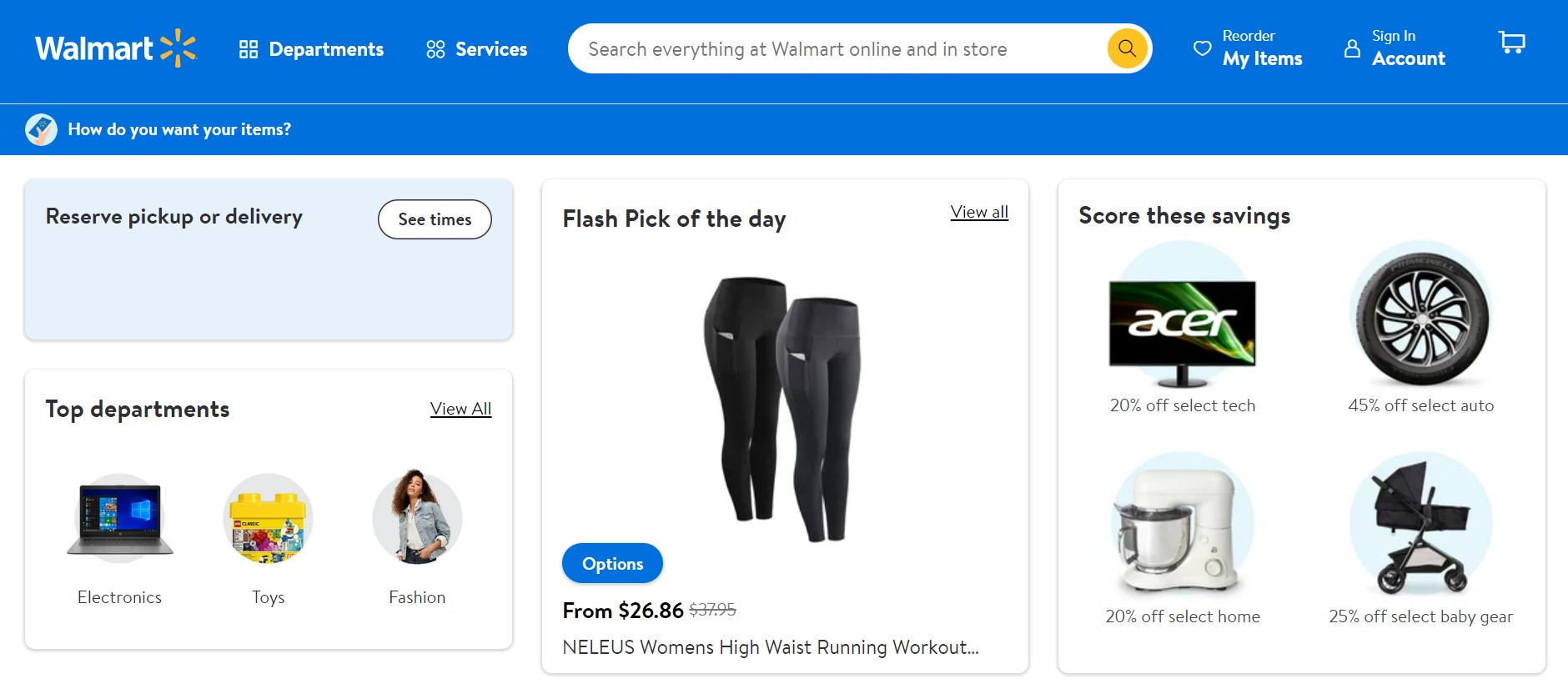
- Wholesale: It’s a pure B2B model when a business buys products in bulk at a discounted rate from a supplier or manufacturer, and then sells the products on their e-commerce website or other sales channels at a markup to other businesses. Usually, there is a minimum purchase amount in this case. The goal is to generate profits by buying products at a lower price and selling them at a higher price. As we’ve just mentioned, this model may be associated with manufacturers too. Alibaba is one of the greatest wholesale business examples.
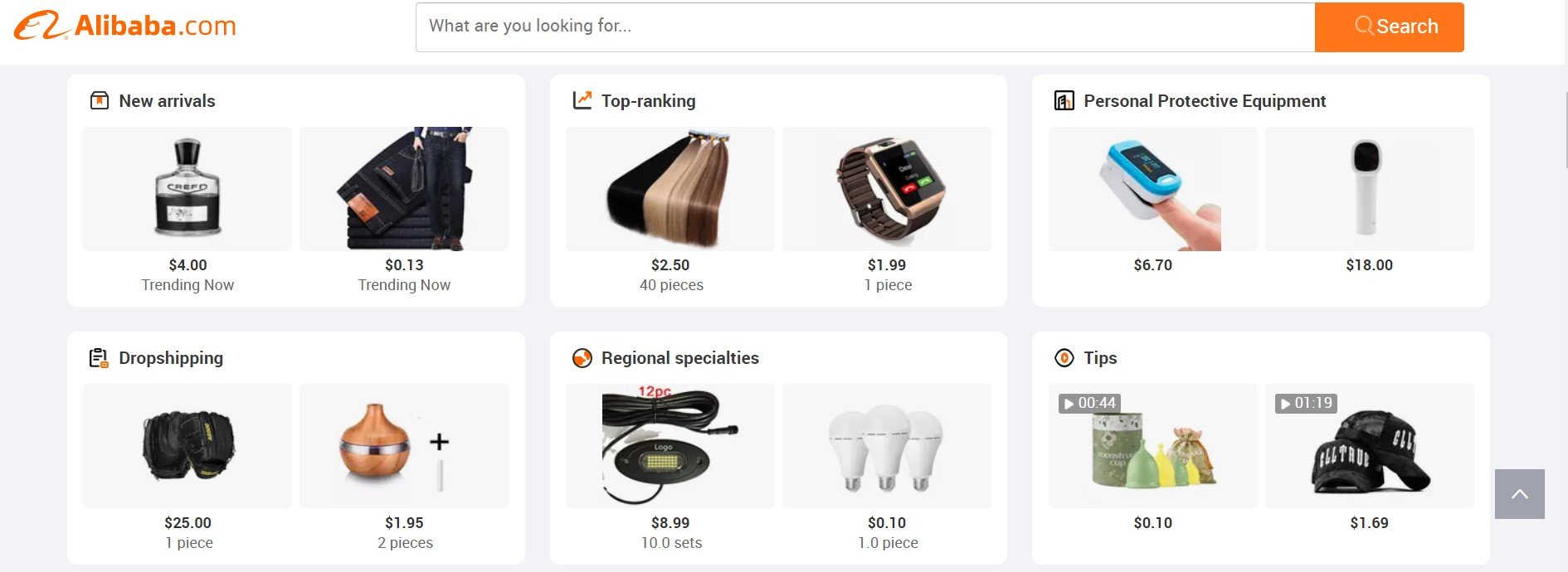
- Direct-to-consumer: If a manufacturer sells their own products directly to customers without wholesalers or retailers it is a direct-to-consumer B2C model. For instance, Peloton is an exercise equipment company that sells stationary bicycles and treadmills directly to consumers online.
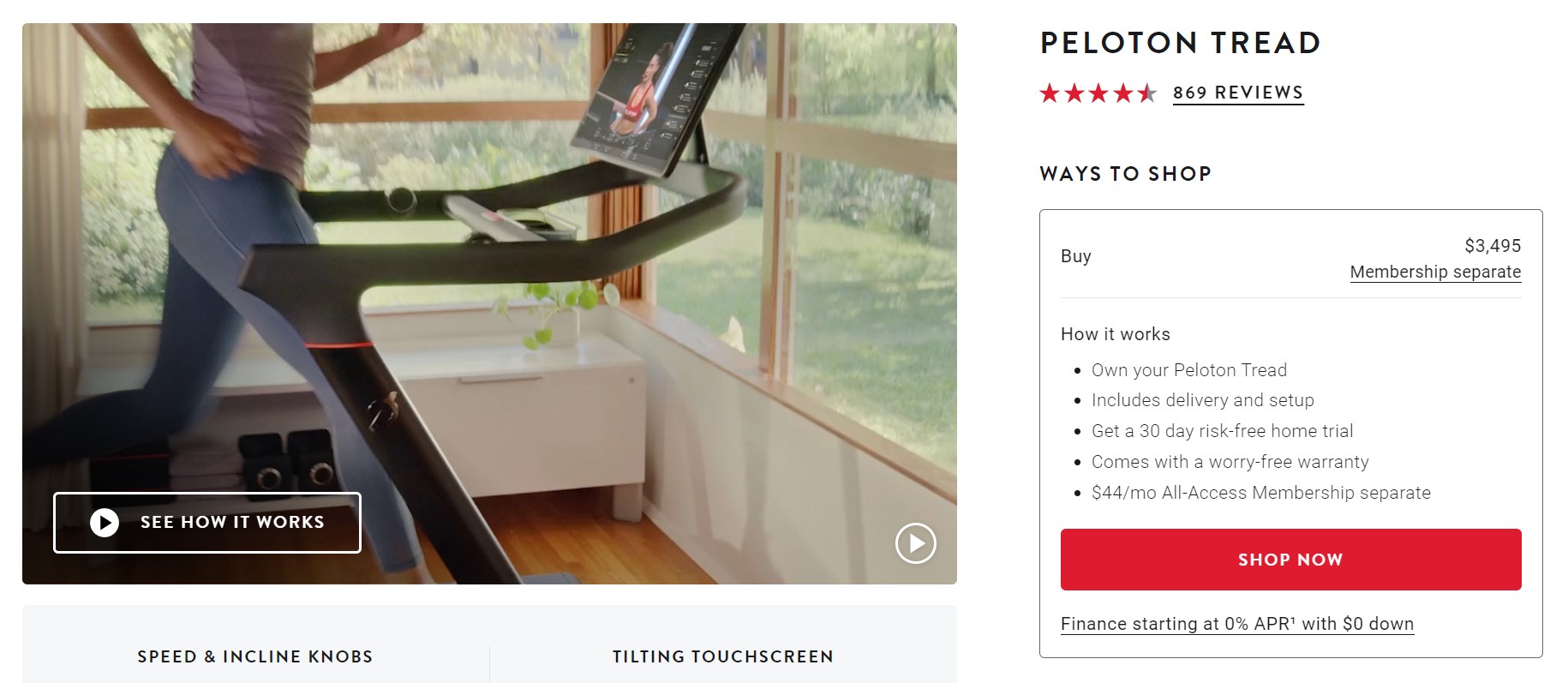
- Dropshipping: Set up a storefront so customers can pay by credit card or PayPal, sourcing from a supplier that manages inventory and packaging. Dropship businesses are quick and inexpensive to start because you only need to create an online storefront for promoting products. Wholesale2b is an example of a company that offers wholesale dropship products. You can find other similar services in our list of drop shipping platforms and integrations.
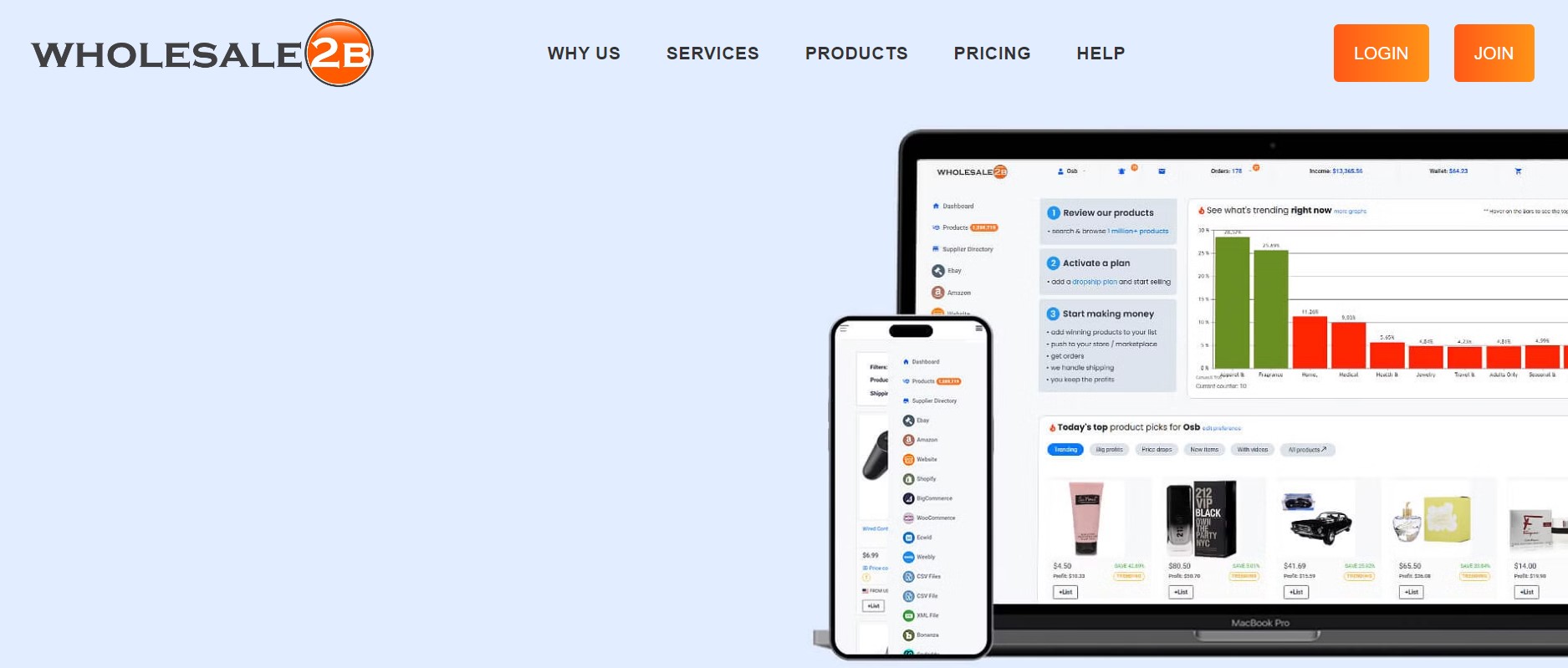
- White label: Put your own name and brand on a generic product that you purchase from a distributor. It is usually a B2C model. Costco’s Kirkland Signature brands are a good example of this model. The company gets products from companies like Starbucks, Duracell, and Reynolds and marks them with its brand identity.

- Private label: In this model, you need to hire a manufacturer to create a product to be sold exclusively by your brand. It could be both B2C and B2B. Zara is an example of a private label company with internal product development.

Which one is more suitable for starting your e-commerce project?
Define your products or services
Now, that you know what business model to choose (or still trying to select it), think about a product or service you have expertise in or would like to have some. Choosing a product or service may also help you with your business model.
Research is the very first step in defining the products you want to sell. Investigate the e-commerce area you’re interested in and keep in mind that, in the best-case scenario, your product should have high demand and low competition. If you find something that falls into this criteria, you can start an e-commerce business without screwing it up even during the hardest recession.
For instance, you live in a small southern town, where the summer season starts in May and ends in October. The level of UV exposure is extremely high in your area which could potentially lead to cataracts according to the National Eye Institute. And the easiest way to reduce risks is to wear sunglasses since they block 99% to 100% UVA and UVB rays.
However, your town is so small that no one sells sunglasses there. You may argue that the lack of businesses in this niche may be explained by the fact that people just don’t want to wear sunglasses. It means that the competition is low, and so is the demand. But you can use a proper marketing strategy to inform people why wearing sunglasses is useful and important. In the case of a successful campaign, your product moves to the area of low competition and high demand.
You can also open an e-commerce business when competition and demand are high. In this case, you will need to establish advantages that will help you stand out from the competition.
Suppose, you want to enter a highly competitive market of florists. There are dozens of small stands with flowers all over your city. But after exploring your competitors, you discover that non of them have Instagram accounts and their offer is standard and boring. While most of the existing florists use offline locations to conduct their business, their potential customers spend lots of time on Instagram. You can streamline this knowledge to successfully enter the market.
Create a business page on Instagram and use ads to reach your potential clients or simply follow your potential buyers. Offer delivery services and bouquets that stand out from average products your competitors sell to attract their audience to your brand. People will love you.
First of all, they won’t need to spend time visiting an offline boutique and choosing flowers there. Customers will also prefer your brand over the existing ones because you offer something unique and stylish.
was a tiny family project that used a similar strategy. Guys created a charming Instagram profile with a limited catalog that, however, included both casual bouquets and more sophisticated flower compositions.

Now, let’s take a look at some other questions to consider when starting an e-commerce business and selecting your product:
- Will you be selling products or services?
- If you’re selling products, are they physical or digital?
- Who are your main competitors and what are their advantages?
- What advantages would you offer?
- Where will you source your products?
- Are their wholesale prices low enough to offer competitive retail prices?
- Are you going to offer single products, packages, subscriptions, or something else?
- Are there legal or other regulations on your product or service?
To provide answers, you need to conduct market research.
Choose your company name
A good company name is crucial to define your business and help it stand out from the competitors and impress your clients. So, you need to choose a good name to start your e-commerce business without screwing it up.
According to , a company name is extremely important due to the following three aspects:
- It is the first thing your customers see;
- It sums up everything about your company;
- It’s a unique take on your industry.
When talking about a company name, we also mean its logo. A title and its visual representation are inseparable. Could you imagine Nike using a completely different logo? When people see something like that, they usually think that it is fake. The company’s logo hasn’t been changed since 1978.
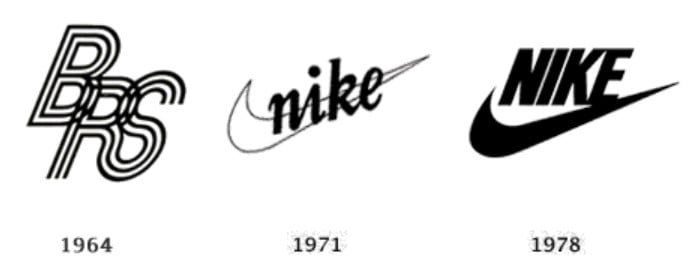
Of course, there are companies that periodically update their visual representation. But it’s a matter of another article.
Let’s return to our tiny e-commerce example. Why is Mimosa Flower Bar a good title?

When customers see this name for the first time, they clearly understand a message: it’s a company that sells flowers. What does a flower bar mean then and could it be deciphered wrong?
Of course, Mimosa Flower Bar could potentially become a confusing title for people who are not a target audience of this e-commerce business. However, the term bar is often used in a context of a fancy place. Thus, it tells a lot to a potential client. They decipher Mimosa Flower Bar as a store where you can find a unique bouquet that is not available from competitors.
In combination with the logo, this business name shows a unique take on the niche. Not the whole industry. But on the scale of a small town that’s more than enough.
Conduct market research
Now, that you understand what to sell (your products and services) and how (your business model), you need to research your target market and analyze the competition. Below, we already described some initial steps of this process. In practice, you will need to dive much deeper to discover all the nuances and possibilities associated with your chosen niche. If your market research shows that the selected product and model won’t succeed, return to the first two steps and start everything from the beginning.
John Academy highlights 7 reasons why market research is extremely important to start an e-commerce business without screwing it up. With properly conducted market research, you can:
- Identify target customers;
- Recognize and comprehend your competitors;
- Discover new business opportunities;
- Reduce business risk and loss;
- Understand customer requirements;
- Enhance marketing strategies;
- Meet demands and keep your business future-focused.
If you don’t do that, you will probably screw your business up no matter it is e-commerce or a chain of brick-and-mortar stores, like the one that Target tried to build in Canada. If you are not familiar with this eloquent case, here is the story.
Target is the seventh largest retailer in the United States that once decided to open a chain of supermarkets in Canada. The company introduced its brand in a new country ignoring market research. Why? Because they were huge, well-known, and successful. Target relied solely on name recognition.
And, as you might have already guessed, the company’s plans to conquer the new market failed. The large retail conglomerate spent millions on advertising via all possible platforms without knowing what their customers want or need. Since Target never took the time to thoroughly research the niche Canadian consumer market, millions of ads on billboards, radio, TV, and social media didn’t provide the desired impact.
Customers in Canada were already aware of the brand, but when they visited the stores, they didn’t get what they wanted: the products were different, the prices were higher, and the expectations were never fulfilled. Target finally closed its stores in Canada and declared the launch a failure.

As you can see, investing in advertising without proper market research resulted in the same effect as if the ads were in a language that the target audience didn’t understand. Why did Mimosa Flower Bar become a successful project? Because they conducted market research.
It was a very simple observation of the market but at the same time deep enough to create a successful strategy. The guys found out that most local florists don’t use Instagram and rely on brick-and-mortar locations solely. Therefore, their primary decision was to create an e-commerce business that would be represented online first. It took $0 to create a page on Instagram. What’s next?
They discovered that most florists offer very casual and boring flower compositions. Still, there was a huge demand for these products during holidays. At the same time, the niche of unique and unusual bouquets was almost empty. The only competitor offered extremely overpriced products. Since Mimosa Flower Bar was a family project managed from home and at home, they didn’t have many fixed expenses. Therefore, they could create a similar proposition at a notably reduced price.
Properly conducted market research helped to start an e-commerce business without screwing it up while the lack of market research led to a tremendous failure on a much bigger scale.
Create a business plan
You’re prepared to create a business plan once you’ve laid the groundwork for your e-commerce business and done your market research. While some specialists think that a business plan is not necessary, we insist that it is vital for companies of all sizes whether it is a huge global corporation or a tiny e-commerce project run by a single person. However, it could take a completely different shape in each case.
Although a strong business plan alone is insufficient, it dramatically simplifies your business activities and reduces risks when combined with market research, planning, marketing, etc. And what you really need for your business plan is flexibility. Create an instrument that helps you accentuate your objectives and develop efficient strategies and tactics. It is always better to have this information combined in a document than scattered across your thoughts.
Thus, even a list that highlights when, where, and how to move forward in the upcoming months, could become your business plan in its most primitive implementation that is enough to start an e-commerce business without screwing it up. However, the following structure is common for most business plans:
- Executive Summary is an introductory overview of your business.
Mimosa Flower Bar is an e-commerce project that sells casual and unique bouquets via Instagram (typically, this section contains more information, highlighting other business plan sections). - Company Description is a section that highlights more details about your business.
Mimosa Flower Bar is a family project run by two people. Our goal is to introduce the people of our town to the beauty of flowers by delivering unique custom bouquets. (Go more in-depth with your company overview, including business structure, nature of your business, industry, background information, business objectives, team, etc.). - The Market Analysis section contains research-based information about your market niche.
There is strong competition in our niche. However, most competitors don’t use Instagram to reach their clients. Also, they provide only casual flowers.
Strengths: We will reach our customers via Instagram and provide unique bouquets along with casual offers.
Weaknesses: We don’t have a brick-and-mortar store to showcase our products.
Opportunities: Using new online channels could be effective. Opening an offline location is a possibility
Threats: Competitors may start using Instagram as an additional sales channel or selling custom offers. - In Products and Services, you describe what you plan to offer in exchange for money.
We sell generic bouquets of flowers along with unique stylish compositions (be more specific). - Marketing Plan contains a promotional strategy to introduce your brand to its customers and drive sales.
We are going to reach our target audience via Instagram. First of all, it is necessary to create a beautiful Instagram page with our products. Secondly, we need to follow potential customers. Asking friends to follow our page is also a good idea. When the number of followers no longer looks too small and suspicious, we could launch highly targeted ads (pull from your existing marketing strategy or break it down by the different marketing channels, etc.). - The Logistics and Operations Plan section describes everything that happens in the background of your e-commerce business to make it function properly.
We need to find at least several potential suppliers of flowers with the lowest prices and assortment suitable for our brand. It is also necessary to purchase a fridge and additional materials necessary for decorating bouquets. - Financial Plan is a breakdown of your numbers to show what you need to get started as well as to prove the viability of profitability.
We need $xxx for the fridge, $xyx for electricity per month, $yxx for marketing purposes, and $xxy to purchase the necessary amount of flowers and supplementary goods. Thus, the cost of Product A is $xx, so we need to sell it at $xy. If the approximate monthly turnover is x items of Product A and y items of Product B, our income is $xxxx.
Even a business plan that is so simple may help you define your business, evaluate your efforts, understand expenditures, and count a possible income. And it won’t take much time and effort to create it. Of course, the bigger your project is, the more in-depth research it requires, so you will need to spend days or even weeks on your business plan.
Register your business
Now, let’s say a few words about registering your enterprise with the appropriate government agencies. It is another essential step to starting an e-commerce business. However, the procedure varies a lot depending on the country where you want to launch your online shop. Below, you will find brief recommendations on how to register an e-commerce business in the US, UK, and EU.
How to register your e-commerce business in the United States
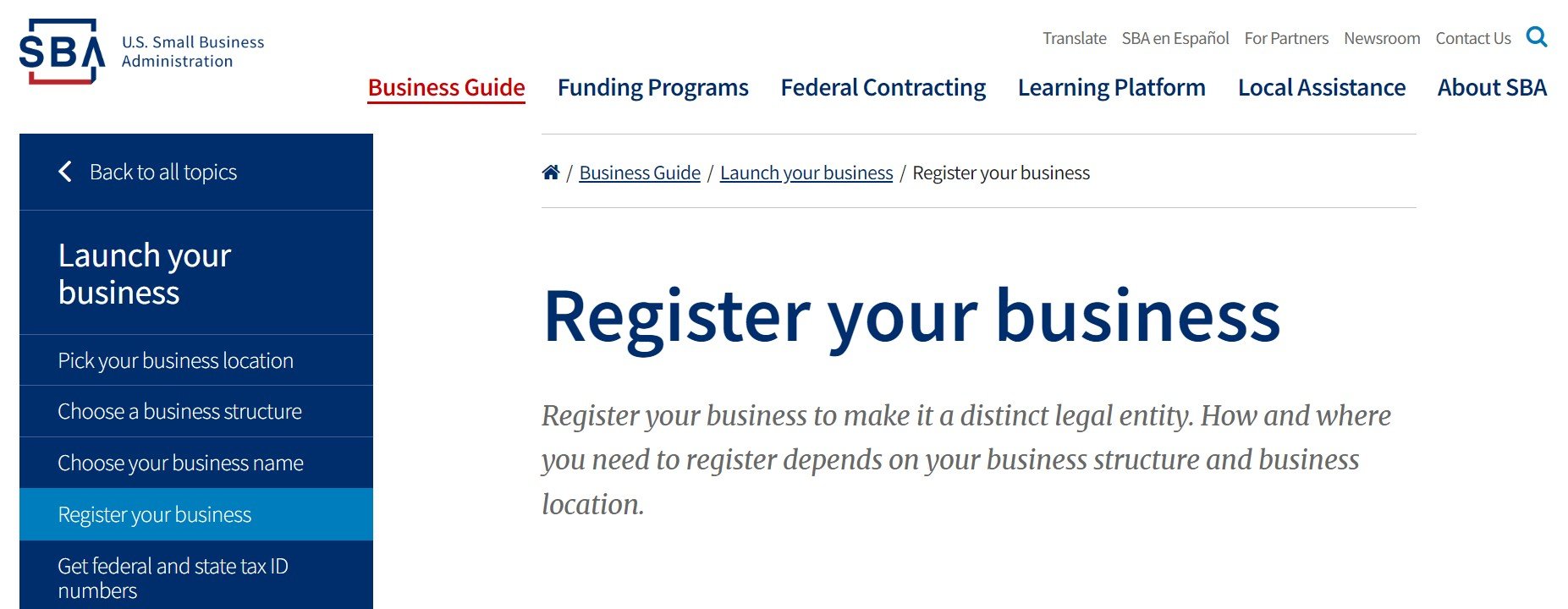
Below, you will find a general step-by-step guide to registering an e-commerce business in the United States:
- Choose a business structure: Decide on the type of business structure you want to register, such as a sole proprietorship, partnership, limited liability company (LLC), or corporation.
- Obtain an EIN: Apply for an Employer Identification Number (EIN) from the Internal Revenue Service (IRS) to use as a unique identifier for your business.
- Register with the state: Register your business with the appropriate state agency, such as the Secretary of State, and obtain any required licenses or permits.
- Obtain a sales tax permit: If your state requires it, obtain a sales tax permit to collect and remit sales tax on transactions.
- Register for state taxes: Register for any state taxes your business may be subject to, such as personal income tax or corporate income tax.
- Comply with business regulations: Ensure your business complies with any local and state regulations, such as zoning laws and health and safety codes.
- Set up a business bank account: Open a separate bank account for your e-commerce business to keep your personal and business finances separate.
- Online payment processing: Configure a payment gateway, such as PayPal or Stripe, to process transactions.
Remember, the specific requirements for registering an e-commerce business in the US can vary by state, so it is important to check with the relevant state agencies for more information to start an e-commerce business without screwing it up.
Another important aspect is that your exact location and business structure determine how to register your business in the US. For most small businesses, the registration procedure is fairly simple. You only need to register your business name with state and local governments. In some cases, you don’t even need to register at all. You can find a detailed description of the business registration procedure on the .
How to register your e-commerce business in the United Kingdom

If you are looking for guidance on how to register an e-commerce business in the United Kingdom, follow these steps:
- Decide what business structure to use: The first step is similar to the US procedure. You need to decide on the type of business structure you want to register, such as a sole trader, partnership, limited liability partnership (LLP), or limited company.
- Register for Self Assessment: If you are a sole trader or a partner in a partnership, register for Self Assessment with HM Revenue and Customs (HMRC) to report your business income and expenses.
- Register your business for Corporation Tax: If you have formed a limited company, register your business for Corporation Tax with HMRC.
- Register for VAT: If your e-commerce business has an annual turnover of £85,000 or more, register for VAT with HMRC.
- Create a business bank account: You need to open a separate bank account for your e-commerce business.
- Register for online payment processing: Add a payment gateway, such as PayPal or Stripe, to process transactions on your e-commerce store.
- Comply with business regulations: Ensure your e-commerce business complies with all relevant regulations, such as data protection and consumer rights laws.
- Get liability insurance: Consider purchasing liability insurance to protect your e-commerce business against potential legal claims.
Keep in mind that the specific requirements for registering an e-commerce business in the UK can vary, so it is important to check with the relevant government agencies for more information.
For instance, you can find a collection of guides on how to start an e-commerce business in the UK as a limited company through . The latter is an executive agency, sponsored by the Department for Business, Energy & Industrial Strategy. It plays a crucial role in ensuring the transparency and accountability of limited companies by collecting and maintaining a range of important information about them.
How to register your e-commerce business in the European Union

This is a guide to registering an e-commerce business in the European Union:
- Pick a business structure: Decide on the type of business structure you want to register, such as a sole proprietorship, partnership, limited liability company (LLC), or corporation.
- Choose a location: Decide on the country in the EU where you want to register your e-commerce business and set up your headquarters.
- Register your business: Record your business with the relevant authorities in the country you have chosen, such as the Chamber of Commerce or the Trade Register.
- Obtain a VAT number: Apply for a Value Added Tax (VAT) number in the country you have chosen and register for VAT in other EU countries where you plan to do business.
- Obtain a business bank account: Open a separate bank account for your e-commerce business to keep your personal and business finances separate.
- Online payment processing registration: Register for a payment gateway, such as PayPal or Stripe, to process transactions on your e-commerce store.
- Comply with business regulations: Ensure your e-commerce business complies with all relevant EU regulations, such as consumer protection and data protection laws.
- Consider obtaining liability insurance: Consider purchasing liability insurance to protect your e-commerce business against potential legal claims.
It is also worth mentioning that the specific requirements for registering an e-commerce business in the EU vary by country. Therefore, check with the relevant government agencies for more information before doing any preparations. But even before doing that, you can find lots of useful information on how to start an e-commerce business in the EU on the .
Choose your sales channels
Now, you should decide upon your e-commerce model. It is possible to start a single-channel e-commerce business that may evolve into a multichannel model or run a multichannel e-commerce enterprise from the very beginning. Let’s see the difference between the two approaches.
Single-channel e-commerce refers to a business model where a company sells its products through a single platform, such as its own website, an online marketplace (e.g., eBay, Amazon), a social media storefront (e.g., Instagram, Facebook), etc. This type of e-commerce approach focuses on maximizing the potential of a single platform and building a strong brand presence there. For small businesses with limited resources, a single-channel e-commerce strategy may be a cost-effective way to reach customers and make sales. Like our small entrepreneurs from Mimosa Flower Bar who created an Instagram page as the only way to reach their clients.
On the other hand, multichannel e-commerce refers to a business model where a company sells its products through multiple channels, such as its own website, online marketplaces, social media, and even physical retail locations. This type of e-commerce approach allows companies to reach a wider audience, maximize sales, and provide customers with multiple options for how they interact with a brand and make purchases. As you might have already guessed, this model is associated with much higher expenditures.
No matter which model you choose, you need to figure out which channels are usually used in e-commerce and which of them are suitable for your project. Remember, your goal is to start an e-commerce business without screwing it up, and additional channels may become a burden that can break the spine of your enterprise. What if guys from Mimosa decided to open a fully-featured e-commerce website in addition to their Instagram page?
They would probably waste money since this sales channel would be much further from their target audience. The same is about a Facebook store. Guys made a perfect decision to invest in a single channel and became profitable right after the first big holiday.
However, each business case is unique. Therefore, take a look at the list of e-commerce channels that can be involved in an e-commerce business. Note that some of them cannot exist independently:
- E-commerce website: It is a website specifically designed for online sales and transactions. Customers can browse products, view detailed product information, and make purchases through the website. For instance, Fender, a famous manufacturer of music instruments, has an e-commerce website. What e-commerce approach does the company utilize? Right, Fender is tight to the direct-to-consumer model among others.

- Online marketplaces: Websites that bring together a large number of buyers and sellers, such as Amazon and eBay, allow merchants to reach a large customer base and sell their products directly to consumers. The largest eBay and Amazon sellers have each sold tens of millions of items. For instance, the musicMagpie Shop has 99.4% positive feedback, 37.6M items sold, and 242K Followers on eBay.
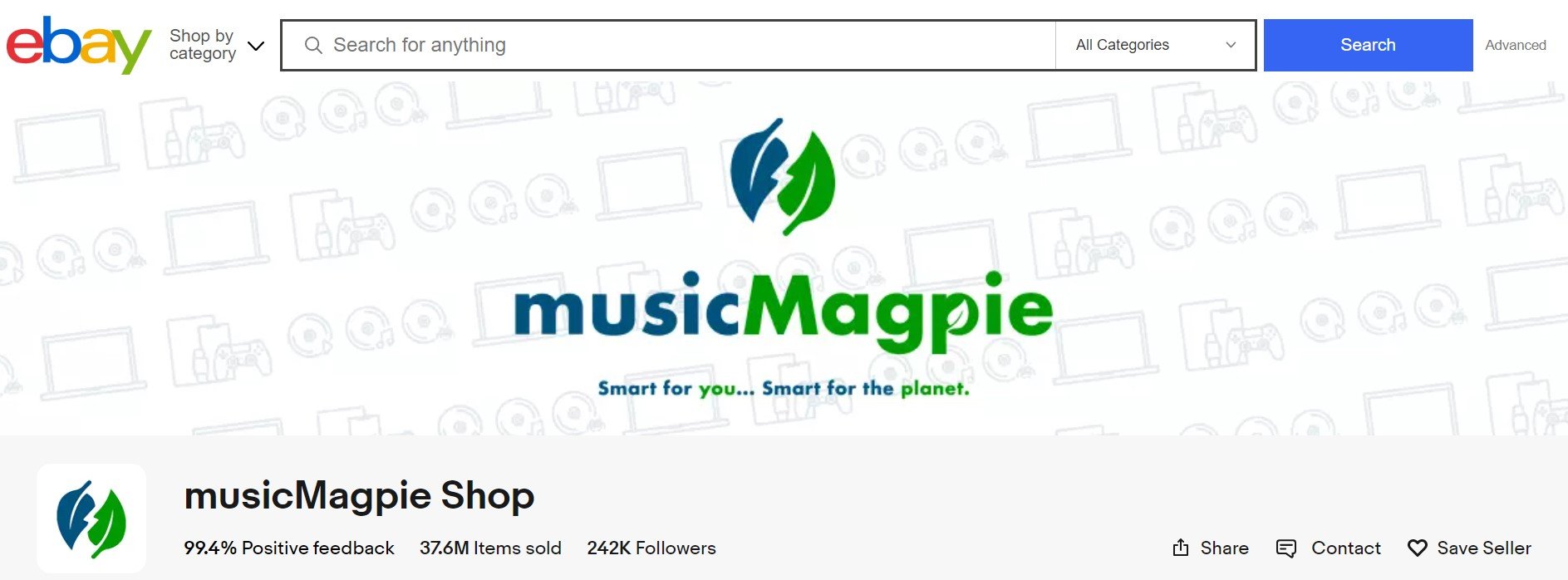
- Social media: Platforms such as Instagram, Facebook, and TikTok can be used to showcase products, build a brand, and reach a wider audience. At the same time, some social media platforms, such as Instagram, now have built-in shopping features. Thus, customers can make purchases directly from a business’s social media account. Boohoo is a good example. It is an online retail company with more than 12M followers on Instagram and extreme popularity amongst teens and young women.

- Mobile app: A mobile application is usually designed for a business’s e-commerce store, allowing customers to browse and purchase products in a more user-friendly manner. The best examples provide customers with unique features. For instance, the ASOS mobile app offers a visual search tool, that lets shoppers quickly find items similar to an uploaded photo.

Each channel has its own strengths and weaknesses, and the specific channels a business uses will depend on its size, goals, target audience, and resources. A well-rounded e-commerce strategy will likely include a combination of multiple channels to reach customers and maximize sales. However, if you are a tiny entrepreneur that sells locally on the scale of your town, using a single sales channel may be more efficient.
Create your e-commerce website
If you decide to start with an e-commerce website, follow these steps:
1) Domain name. Choosing a domain name is an important step in starting an e-commerce business as it can impact the website’s visibility and branding. The ideal domain name should be short, memorable, and relevant to the business and its products. It’s recommended to conduct a thorough search and consider variations and available extensions before settling on a final choice.
Our domain name, as you can see above, is firebearstudio.com. If you are not going to launch a website first, you need to think about your name representation in the selected platform URLs. For instance, https://www.instagram.com/mimosa.flowerbar/ is fully suitable for the brand identity. The original brand title was never used before, so guys could create their page with the selected name and its proper representation in the URL.
2) E-commerce platform. Although the number of e-commerce enterprises globally varies between 10 and 25 million companies according to different sources, calculated 12 million. The platform tracks over 7 million e-commerce websites across the world scattered across e-commerce platforms of different complexity levels aimed at businesses of all sizes and industries. Below, you can find a few examples of prominent e-commerce systems:
- Shopify is currently one of the largest e-commerce platforms in the world and is used by over a million businesses. It offers an all-inclusive, user-friendly solution with a variety of add-ons starting at $5 per month. According to , 19% of all e-commerce websites are based on Shopify.

- WooCommerce, on the other hand, is an open-source platform built on WordPress. It is even more popular according to the same source, powering 23% of all e-commerce websites. You just need to download and install the plugin to create an online storefront. It is open-source, free to download, and includes a full range of e-commerce features.
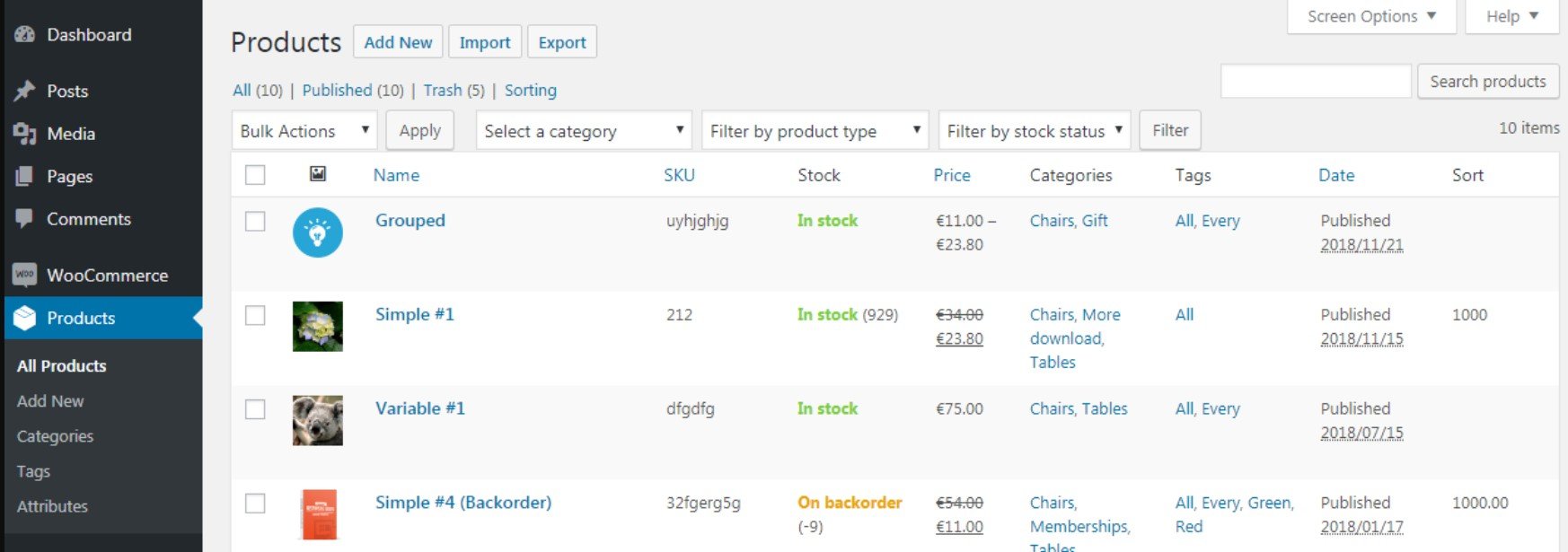
- Magento is also widely used, with a large and growing community of users and developers. However, only 7% of e-commerce websites incorporate this platform. With this e-commerce platform, you can entirely customize your site. But you also must have the necessary technical skill. Or get ready to pay for it.
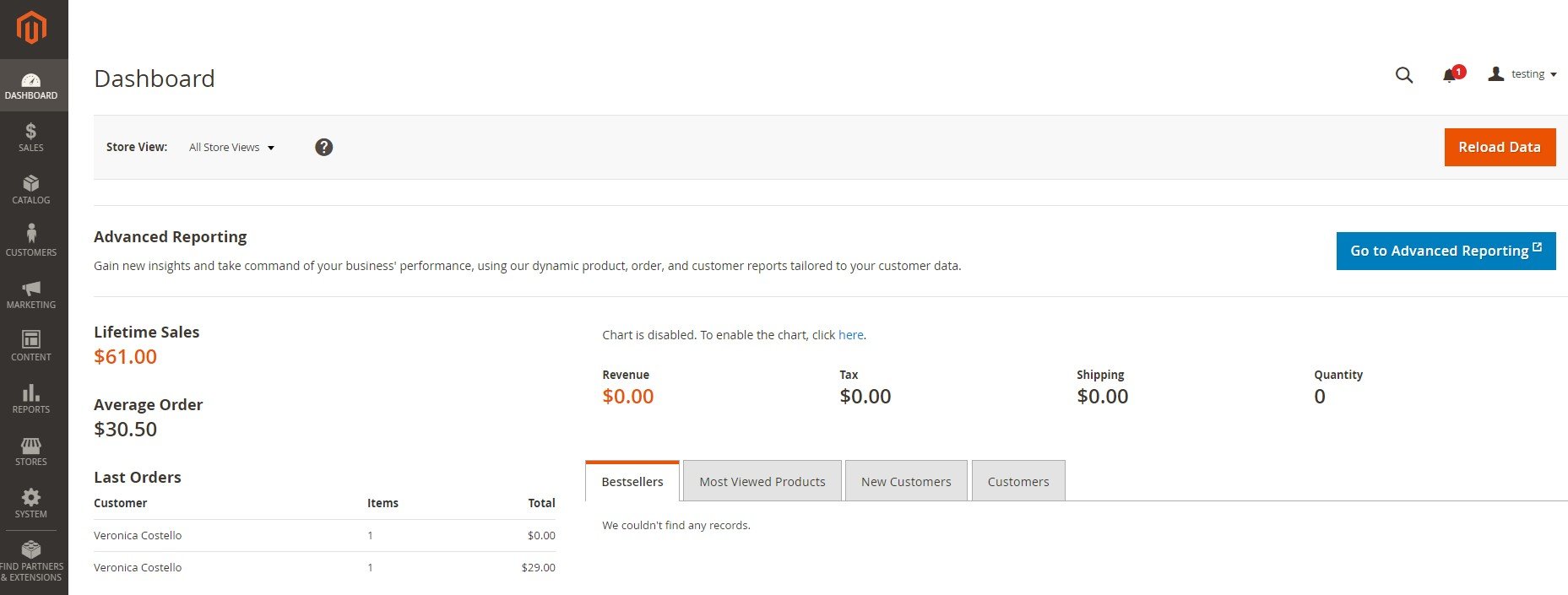
- BigCommerce is another popular e-commerce platform. Although its market share is smaller, it serves businesses of all sizes.
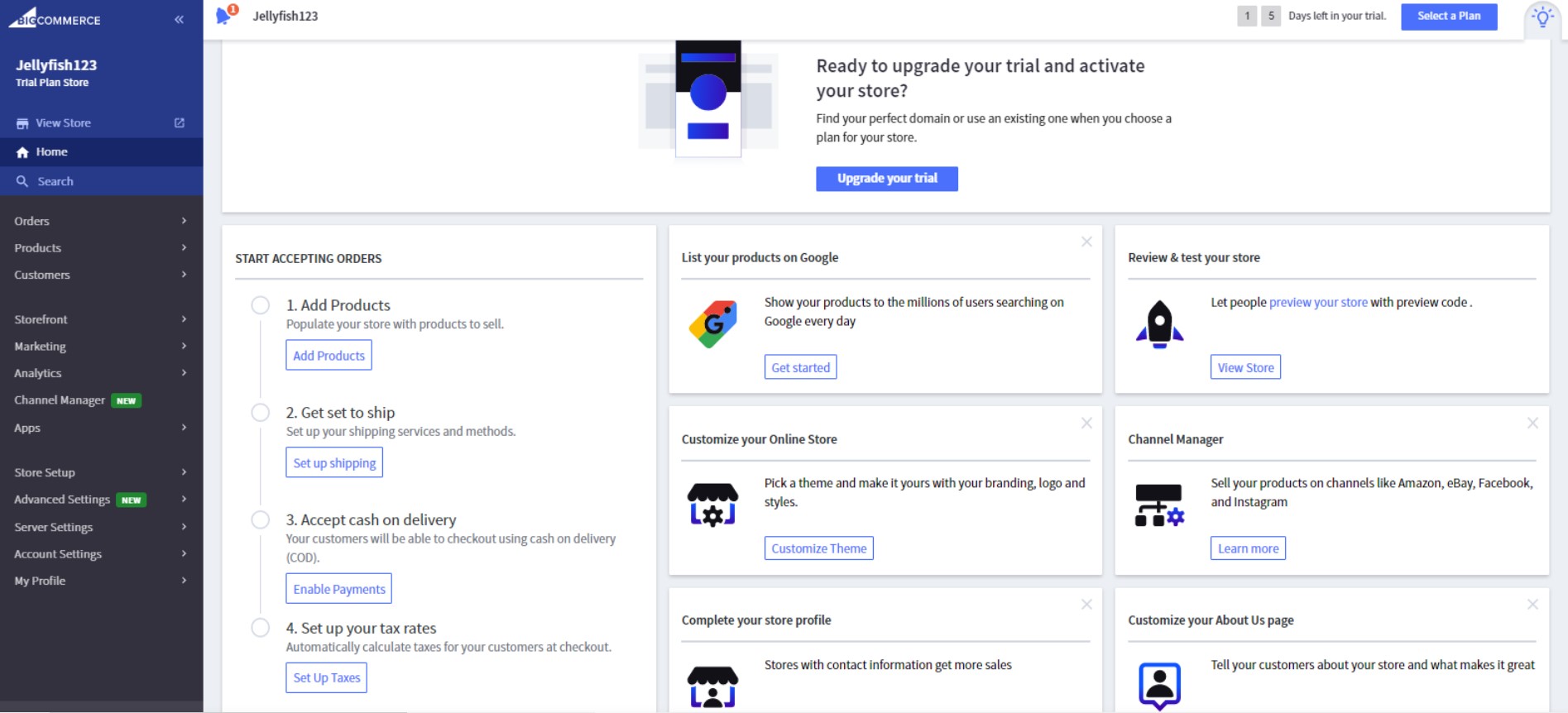
- Shopware is even smaller. It is a German e-commerce platform that used to be popular mostly locally. However, Shopware has been growing in popularity all across the European Union and the United States.

3) Hosting provider. As you might have already guessed, many more hosting providers are available all over the globe. You need their services to make your e-commerce storefront accessible for your customers. Although some e-commerce platforms provide hosting as a part of their offers, you will probably need to use third-party services.
Some hosting providers offer solutions optimized for a particular ecommerce platform. For instance, we’ve recently reviewed the best Magento hosting providers. You can also find solutions for WordPress/WooCommerce, Shopify, and other platforms in our digest.
4) Brand design. It is also important to customize your site. While most e-commerce platforms offer generic themes, add a hint of your brand identity to your online storefront. You may need to hire a specialist to implement the desired design changes on your website. Or find a corresponding tutorial and try to do everything by yourself: , , Shopware, , and .

If it is an Instagram page, you can turn it into a recognizable brand representation with a company logo, description, and proper content. You can find the official guidance on how to configure your Instagram and Facebook shop .
If you decide to create a sales channel on eBay or Amazon, follow these links: and .
5) Delivery method. E-commerce merchants use multiple delivery methods. Choose those methods that suit your business and might be requested by your customers.
From the perspective of a delivery location, delivery methods can be divided into the following 4 groups:
- Home Delivery: It is the most common delivery method, where products are delivered directly to the customer’s address.
- In-Store Pickup: With this delivery method, customers can choose to pick up their orders from a physical store location.
- Curbside Pickup: It’s a contactless variation of the previous method when customers can pick up their orders from outside the store without entering it.
- Post Office Delivery: This delivery method assumes that customers collect their orders in a post office or another third-party location associated with a delivery company.
If we talk about the time necessary to deliver an order, delivery methods fall into the following categories:
- Same-Day Delivery: Products are delivered to the customer on the same day the order was placed.
- Next-Day Delivery: Products are delivered to the customer the next day after the order was placed.
- Standard Delivery: Products are delivered within a specified time frame, typically within 2-5 business days or a couple of weeks.
Also, delivery methods can be distinguished according to whether you sell locally or globally:
- International Delivery: You deliver products to customers in other countries.
- Domestic Delivery: You deliver products to customers within the same country.
International delivery is often associated with the following three types:
- Air: It’s the fastest but the most expensive type of international delivery.
- Land: This delivery method is less expensive than delivery by air but also slower.
- Sea: This international delivery method is the slowest one but the least expensive.
In the case of a big country, shipping providers may also offer delivery by air, land, or sea for domestic delivery. For instance, you can deliver goods from New York to Los Angeles by air or land. Some goods can be delivered by sea as well.
6) Shipping providers. After you decide what delivery types you want to use, choose a shipping provider. A shipping provider is a company that specializes in the transportation and delivery of packages and other shipments, either domestically or internationally. In the context of e-commerce, shipping providers are used by retailers to fulfill orders and deliver products to customers. Below, you can see some examples of shipping providers:
- USPS;
- FedEx;
- UPS;
- DHL;
- Amazon Logistics.

These shipping providers offer a range of services, including ground and air shipping, express delivery, international shipping, and same-day delivery. Choose the shipping provider that best meets your needs based on factors such as delivery speed, cost, and the geographic location of your customers. Note that some shipping providers also offer additional services, such as package tracking, insurance, and customs clearance for international shipments.
It is also worth mentioning that such platforms as Magento are by default integrated with shipping providers. Therefore, you will need to configure what shipping companies you want to work with right in your admin: , , Shopware, , and .
As an eBay seller, you can leverage convenient shipping options and exclusive postage discounts. Amazon goes even further. It lets sellers outsource order fulfillment and shipping to Amazon itself with the FBA program. It is not dropshipping, since you have to send your goods to Amazon fulfillment centers. Also, read about .
7) Payment processing. Finally, you can set up payment processing. Choose a payment gateway to process transactions on your e-commerce store. Here is a list of some of the most popular options:
- PayPal is one of the most widely used payment gateways. It allows customers to make payments using their PayPal account or credit card. It offers a range of features, including fraud protection, automatic currency conversion, and the ability to process refunds and returns.
- Stripe is a popular choice for online businesses too. It offers a simple, straightforward payment processing solution that supports a wide range of payment types, including credit and debit cards, as well as Apple Pay and Google Pay.
- Authorize.net is another leading payment gateway. It offers a range of features, including recurring billing, fraud detection and prevention, and virtual terminal capabilities for phone and mail orders.
- Square was initially designed for brick-and-mortar businesses. However, it now offers a comprehensive payment processing solution for online businesses that supports a range of payment types and offers features such as invoicing, payment tracking, and recurring billing.
- 2Checkout is another international payment gateway. 2Checkout supports multiple languages and currencies and offers such features as recurring billing, fraud protection, and a secure checkout experience.
- Adyen is a cloud-based payment gateway that supports a range of payment types and offers features such as recurring billing, risk management, and multi-currency support.

Each of these payment gateways offers different features and pricing plans. Carefully consider the needs of your business before choosing one to start an e-commerce business without screwing it up. Factors to consider include the types of payment methods you want to accept, the cost of processing transactions, and the level of security and fraud protection offered by the gateway.
Also, pay attention to the following payment options broadly used in e-commerce:
- One-time purchase: This option involves customers making a single purchase of a product or service, without any recurring obligations. For example, you buy a pair of snickers online: you find them on a website, add them to your cart, and check them out paying for them in a single transaction. This option is available in all e-commerce channels by default.
- Cash on Delivery: A customer pays for the ordered products when they are delivered. Let’s return to the example above. Instead of paying for your sneakers at checkout, you pay for them when a courier brings them to your home address.
- Subscription: Subscription-based purchases refer to a type of e-commerce model where customers sign up to receive regular deliveries of products or services on a recurring basis, such as monthly or annually. The customer pays a recurring fee for the products or services, which can range from physical goods, such as groceries or personal care items, to digital services, such as access to a streaming service or software. Your Shopify Subscription is a good example of this payment method. This functionality is often based on third-party modules, like in Magento 2.
- Installment: This option allows customers to split a payment into several equal amounts charged over a period of time. For instance, you want to purchase a very expensive pair of sneakers. You get your shoes after the first payment transaction. While you can already use your brand-new sneakers, you still owe some money to the e-commerce merchant.
- Layaway: A layaway plan allows customers to make payments over time and take possession of the item once the full amount has been paid. Unlike installments, layaways don’t let you take home an item before you have fully paid for it.
- Credit: This option allows customers to take out a loan to pay for their purchase, typically through a third-party organization. This option can be useful for larger purchases and is often offered by retailers of electronics, appliances, and other high-end products. Usually, a third party pays for the purchase (your sneakers) and you have to pay back this loan with interest to this third party instead of a merchant.
You can read more about payment methods on different platforms here: , , Shopware, , , , , , and .
8) Integrations and extensions. In addition to the default features and tools, you may need to enhance the functionality of your e-commerce website with extensions and integrations to start an e-commerce business without screwing it up. Install and test the solutions that your business requires before launching the production store. It will help you avoid problems caused y extension conflicts, improper functionality, or human factor. Keep in mind that you may need to uninstall modules that are no longer necessary or don’t satisfy your business needs. Luckily, you can always replace them with better, more feature-reach solutions.
Each huge e-commerce system has its app store with plugins divided into various categories. You can find third-party apps for your online storefront here: , , , , and .

In addition to extensions, you may need to integrate your e-commerce website with other systems: ERP, CRM, accounting, PIM, etc. These external platforms can automate various routine processes and eliminate errors associated with your daily duties.
Does everyone need to install extensions and establish integrations to open an e-commerce business?
No. It is an optional step that is required when the default functionality of your e-commerce platform is not enough. By installing a few plugins, you can provide your clients with the experience they are looking for and impress your admins with a workflow that they couldn’t imagine.
Purchase equipment
You might also incur additional costs for equipment that your business requires. Guys from Mimosa only needed a fridge for storing flowers. In addition to equipment, you may need to buy business insurance, hire employees, and pay for third-party sales consultants.
Market your business
Your goods or services are listed on your online store. The website is operational with all the necessary shipping and payment options enabled. However, you’re not yet ready to start providing customers with exceptional services. You need effectively market your e-commerce business first.
At this stage, you need to return to your business plan and its marketing plan section. Consider it a foundation of your marketing strategy. You may need to conduct additional market research to get more information regarding marketing possibilities. A comprehensive marketing strategy drives traffic and sales, so don’t miss your opportunity to jumpstart your e-commerce business more efficiently.
The marketing stage may require employing a marketer and adopting a variety of strategies, such as word-of-mouth marketing, social media advertising, and Google ads. You may focus on a single tactic or develop a multi-layered strategy to start an e-commerce business without screwing it up. Everything depends on your unique business case. These are a few marketing directions for you to consider:
- SEO: Optimize your website for search engines to rank higher in search results and attract organic traffic. This includes using relevant keywords, high-quality content, and a well-designed website. You can find more tips in our E-commerce Product Page SEO Checklist. And never use black hat SEO strategies. Even if they work right now, Google will evolve soon, and you will be penalized as BMW once had. Back in 2006, the company decided to use doorway pages – a black hat SEO strategy designed to increase search rankings for its targeted keywords. It happened because Google couldn’t understand Javascript at that moment and, in turn, couldn’t rank. After the search engine learned how to read Javascript, it demoted BMW’s PageRank all the way down to 0.
- Product visibility. Selling outstanding goods or providing first-class services is not always enough. You often need to increase product visibility to attract customers to your e-commerce business. This process includes a combination of tactics and instruments. Read this article for further information: Best Software To Increase Product Visibility.
- Social media marketing: Use social media platforms, such as Facebook, Instagram, Twitter, and TikTok to promote your products and engage with your target audience. For instance, ASOS once created a campaign for Instagram that went viral. The company asked customers to share pictures of themselves on Instagram with the hashtag #AsSeenOnMe. Such images went into a gallery on the ASOS website and feed. More than 1,4M posts with this hashtag are available right now, and people continue uploading new photos.
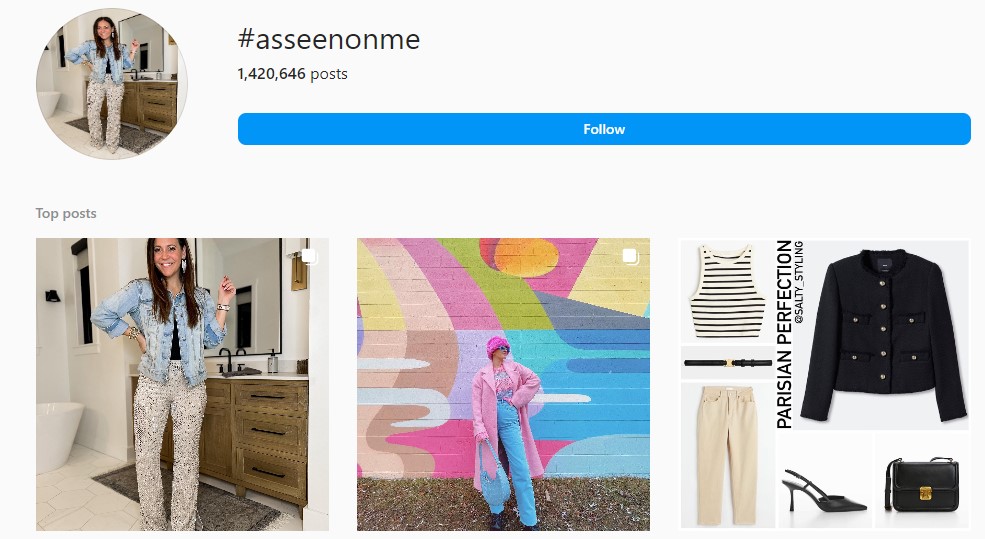
- Email marketing: Build and maintain a targeted email list to reach your customers and potential customers with promotions, sales, product updates, affiliate offers, etc. For instance, Tradesy uses its shipping confirmation email to promote its referral program (see image below), Athletic Greens offers readers the chance to upgrade to a subscription at a reduced price, Lyst sends email messages based on brands customers are interested in, etc. There are hundreds of examples like that to get some inspiration for email marketing. However, you will also need to choose the corresponding instruments that help you deliver your message to clients. We examine the best email marketing tools, platforms, and services here: Best E-Commerce Tools And Services: Email Marketing Software.

- Advertising: Consider using paid advertising channels, such as Google Ads or social media ads, to reach a wider audience and drive sales. Learn what your target audience wants and inform them with eye-catching ads. However, there is always a possibility that you can fail. As Dove did. Twice. They posted a three-second Facebook video ad demonstrating a black woman turning white in October 2017 (see image below). Then they made the same mistake with a poster.

- Referral and affiliate marketing: A marketing program where business partners with affiliates or provide customers with the ability to share referral links can turn your clients into efficient employees who promote your products and services for a commission for each sale they generate. For instance, is a retailer that sells discounted designer clothing. Gilt’s referral marketing program awards $25 gift cards to referrers and their invitees. Referrers can share their referral link with their friends, using one of their convenient share buttons. Alternatively, invitees can scan a custom QR code. Check our list of the Best Referral Program Software to discover tools that enable the corresponding functionality.

- Influencer marketing: Partnering with social media influencers to promote products and reach a wider audience through sponsored posts, product reviews, and other forms of collaboration is also a good idea. This marketing strategy doesn’t work for all products and services, but if you think that it suits your business model, why not try it? The good thing is that there are influencers of all sizes. No matter you are a tiny local e-commerce project or a huge international corporation, you can find the right media personality to promote your brand. For instance, For instance, Lazy Oaf collaborated with Marzia Kjellberg (8.3M followers) on a Brighton travel guide. It’s clear that collaborating with Marzia would provide the brand with significant exposure. Over 7,600 people liked that post. If you run a tiny e-commerce business, you can ask your friend with a few thousand followers to help you promote your brand locally. It is also considered influencer marketing.

It’s important to have a clear understanding of your target audience, the types of products and services you offer, and the overall goals of your business to implement your marketing strategies effectively. With the right marketing mix, you can drive traffic to your e-commerce store, convert visitors into customers, and grow your business.
At the most basic level, you need to optimize your online storefront for SEO. Even if you use a Facebook or Instagram page as your only store, SEO is crucial. Enhance your page with keywords that your target audience uses so that they could find you.
In the case of a fully-featured website, leverage online marketing tools that are already built into your e-commerce platform. Or install third-party solutions if your marketing strategy requires that.
You’ll need to keep track of which marketing strategies are effective and which aren’t as your e-commerce business gets going and you start to receive orders. Get ready to modify and change your marketing plan to see what works best for you. And never forget that flexibility is your number one priority when it comes to a successful marketing strategy.
Launch your e-commerce business
So, it’s time to launch your e-commerce store. You are ready to start selling your products or services online. Take the following algorithm into service:
- Start simple. Try not to overestimate your possibilities. Thinking that you are more powerful than you are may screw your e-commerce business up. If you evaluate your opportunities wrong, it becomes a serious burden. Overpromising and underdelivering results in very expensive consequences for all involved. The bigger your company is, the more dramatic the consequences are. Like in the case of Theranos. The company claimed that it had developed a compact device for blood tests that required very small amounts of blood, offered rapid productivity, and worked accurately. These claims were proven to be false.
- Invest in social media and brand awareness. Share your business across multiple social media channels. Your potential buyers are situated everywhere. Even if 50% of them hang out on Instagram, others are scattered across other platforms. Expand with the previous tip in mind: don’t try to conquer all social networks at once. Develop a social media marketing strategy that suits your company’s size and budget. A strong social media marketing campaign can make your brand viral and have a long-lasting impact on your business, like Unicorn Frappuccino by Starbucks which became extremely popular on social media, or Spotify’s Wrapped campaign which has huge success for the company in terms of viral marketing.

- Invest in multichannel selling. Just like in the case of social media, adding new sales channels brings more customers. Even if eBay, for instance, brings a very small percentage of sales, it’s important to stay on this marketplace because some people only shop there. However, you need to streamline and automate your inventory management processes before expanding to sales channels. It means that inventory management should be synced for all sales channels associated with your e-commerce business. For instance, Leesa sells products through its Shopify store, Amazon, Facebook, and Pinterest, successfully synchronizing stocks between all four channels.

- Monitor and adjust. First of all, you should review your store’s performance on a regular basis and improve customer experience whenever you can. We all know the impact of bad customer experience on sales. At the same time, it is necessary to monitor your market to understand what advantages your competitors offer. No matter how big or small your e-commerce business is. Even if you are confident that these advantages won’t necessarily impact your business, they may destroy it. Like the Android and Apple ecosystems drowned Nokia. The latter once turn mobile phones into fashion accessories but lost a battle to more flexible and creative companies. Why? Nokia always was a top-notch hardware producer but the company did not pay attention to the rapidly growing market of apps for Android and iOS devices. People preferred better customer experience to reliable hardware. Nokia overestimated the strength of its brand and made a series of mistakes that led to failure. The lack of flexibility and inability to adjust to ever-changing customer demands became a tombstone for a once successful corporation.
Keep in mind that starting an e-commerce business can be a complex process, so get ready to invest time and effort into research, planning, and execution.
Choose strategies to survive the global recession
The ongoing recession has had a significant impact on both businesses and consumers. Therefore, you should be especially careful when starting an e-commerce business in 2023-2024 in order to stay afloat. Below, we prepared a few tips on how to adapt to the new reality:
- Improve Business Efficiency. Always think about how to improve your business efficiency by reducing expenditures and increasing profits. You may need to explore new sales channels or, on the contrary, forget about inefficient ones. Consider all methods suitable for your business case. Stay flexible and remember that even the smallest update can play a pivotal role for your e-commerce business during the crisis.
- Never Forget About Marketing. As we’ve just mentioned above, marketing is an inevitable part of your business. You should never decrease your expenditures by sacrificing a working marketing strategy. On the other hand, you could have invested in strategies that never began to produce the desired result before the recession. In this case, either get rid of them or try to improve these strategies.
- Continue Investing in SEO. Never stop doing that. Otherwise, you will get kicked out of search results, losing sales in these difficult times. Even if your e-commerce store is perfectly optimized, keep an eye on recent Google updates since they may change your store’s position on SERPs.
- Prioritise Products With The Highest ROI. What are your most successful and demanded products? They should always be in stock. You should improve your inventory control to avoid situations when products with the highest ROI are out of stock. You may even focus on promoting them to increase their ROI even more.
- Explore Your Customers. Crisis impacts everyone so you need to learn what new habits your customers have acquired. Learn more about your existing clients and discover new opportunities associated with potential buyers.
- Adopt Innovations. You may argue that a recession is not a good time for innovations but some improvements can be life-changing. For instance, you never reached your clients over email, using social media platforms instead. However, marketing research shows that email marketing should outperform your SMM efforts. That’s a strong argument to adopt innovation.
Stay flexible. Monitor and adjust. Read our strategies to survive global recession to learn more. If you want to start an e-commerce business without screwing it up, calculate how expensive it is.
How much does it cost to start an e-commerce business?
So, now that you’ve gone through all steps involved in how to start an e-commerce business, let’s try to evaluate the cost. Although starting an online business is associated with saving on a variety of costs of launching a brick-and-mortar store, you face unique e-commerce expenditures. Still, it’s easier to fund an e-commerce business on a tight budget in some cases.
However, it’s impossible to determine how much it costs to start an e-commerce business on average. Each business case is unique. Even if we explore two similar at the first glance cases. Let’s assume that two entrepreneurs from the same town want to launch e-commerce businesses aimed at selling sunglasses. One of them creates a Magento website while another launches an Instagram store. They use different marketing tools and spend different budgets on advertising.
Consequently, each business requires a unique approach to evaluating its initial expenditures. They will largely depend on numerous factors, such as your e-commerce business type, platform, products, country, marketing tools, and sales channels, among other factors.
With this in mind, carefully consider your budget as you prepare to begin your e-commerce journey. You should specifically consider the following costs:
| Name | Description | Budget |
| Choose your e-commerce model | It costs nothing if you want to dig deep into the topic by yourself. However, a competitive consultancy may save you from numerous headaches in the future. And, of course, it will help you save tons of time if you start an e-commerce business for the first time. You may get a consultancy for free from friends or the community. But usually, it’s better to hire a highly-skilled professional. | From $0 |
| Define your products or services | You can also define products to sell for free but try to get an opinion from someone who is more experienced than you. Also, it is possible to get it out of charge but consider working with someone on a commercial basis a more efficient option. | From $0 |
| Choose your company name | Although you don’t need to pay someone to choose the name for your e-commerce business, some entrepreneurs prefer to delegate this step to marketing agencies. You will also need to create a logo. However, there are tools that can help you create your logo for free, e.g., logo.com. |
From $0 |
| Conduct market research | It’s up to you to decide whether you conduct market research by yourself or hire a specialist. | From $0 |
| Create business plan | The situation with a business plan is similar: you can create it if your e-commerce project is small. However, the bigger your company is, the more difficult it gets to create a reliable plan. So, a third-party consultancy may be a good idea. | From $0 |
| Register your business | Costs vary depending on your country of registration, entity type, location, and what you’re selling. In some cases, it costs nothing to register a retail business, while, in other cases, it may cost thousands of dollars to pass all the registrations and get the licenses and permits required. | From $0 |
| Choose your sales channels | Sufficient market research is enough to choose sales channels suitable for your e-commerce business. No matter you did it by yourself or paid a specialist, choosing your sales channels is free. | From $0 |
| Create your e-commerce website | You can start small with an Instagram page as Mimosa did. It costs nothing. If you create your e-commerce website. Its price varies depending on the selected platforms, themes, customizations, hosting, extensions, and integrations. | From $0 |
| Purchase equipment | If you run a dropshipping website, you don’t need any equipment. You can reduce expenditures associated with this step to a minimum. | From $0 |
| Market your business | As a general rule, budget about 6% to 7% of your gross revenue for marketing and advertising. This can be difficult to estimate when you launch an e-commerce business for the first time. Therefore, take advantage of any free marketing and advertising platforms you can find. Then, once you’ve figured out what works best, look into paid options for promoting your business. | From $0 |
| Launch your e-commerce website | It’s the first day when your store is available online. It functions well. You received the first orders. No expenditures are associated with its launch. However, your business maintenance always requires money. You may need to buy an extension, implement a performance improvement, improve SEO, integrate your business with a marketing or accounting tool, etc. | From $0 |
As you can see, it is possible to start an e-commerce business for free if you have enough competence and free time. But it doesn’t mean that every business can be launched with zero expenditures. How much did it cost to launch Mimosa Flower Bar? Let’s count.
The initial idea behind this e-commerce business was to sell flowers online to end customers on a scale of a small town. Guys spent about $50 on a company logo, $200 on a used fridge, about $100 on ads, and $500 on flowers, packaging materials, and supplementary items necessary for their bouquets.
They explored the local market by themselves, created a business plan without third parties, and got the necessary information for free from the community and friends. Creating an Instagram profile was also free.
So, it took less than $1k bucks to start an e-commerce business. All the expenditures were covered during the Saint Valentine’s Day sale. Why was the business shut down then? You’ll find the answer in the next chapter.
How To Start An E-Commerce Business: Bottom Line
Starting an e-commerce business without screwing it up is sophisticated painstaking work that requires a lot of time, effort, and dedication. Sometimes, this process also demands a lot of money. Especially if you want to speed up the opening of a business and plan to conquer the universe.
At the same time, opening an e-commerce business is an interesting and interactive process that needs flexibility, ingenuity, and creativity. You will definitely enjoy it!
Although each business case is unique and requires an individual approach, there is a general algorithm that simplifies the path from an idea to its implementation. And now you know what steps to take to open a business online without screwing it up. Let nothing stop you on your way to the e-commerce dream.
As for Mimosa, the project existed for a little bit more than a week after the successful sale on February 14th, 2022. The war suddenly came to a little and once quiet town. The young and prospective business was closed. Its owners left the town along with thousands of other citizens.
Other materials in our blog
Below, you can see several other materials from our blog that can help you open your e-commerce business:
- 10 E-Commerce Strategies To Survive Global Recession 2023-2024
- Everything You Need To Know About E-Commerce Total Cost of Ownership
- The Ultimate Guide To System Integration
- Ecommerce Product Page SEO Checklist
- Shared Hosting vs VPS: How To Grow Your Business Faster?
- In-Depth Shopify Admin Exploration
- Magento 2 Commerce (Adobe Commerce Cloud) In-Depth Review
- Magento 2 (Adobe Commerce) Pricing Explained
- Best Magento Hosting: Optimized Managed Hosting for Adobe Commerce, Magento 2 Open Source, Magento 1
- Exploring Shopware: Getting Started With The Platform
- Best E-Commerce Tools And Services To Enhance Your Business
How To Start An E-Commerce Business FAQ
How do I start an e-commerce business?
Define your business model, choose your products and services, select your company name, conduct market research, register your company, choose your sales channels, purchase necessary equipment, market your business, launch your store, and keep it functioning.
What are the 4 types of e-commerce businesses?
– B2C: you sell a good or service to individual consumers;
– B2B: you sell a good or service to another business;
– C2C: you create a platform where consumers sell to one another;
– C2B: you create a platform where private individuals sell products or services to businesses.
What are the most popular e-commerce models?
– Retail: a business sells products directly to consumers at a price that includes a markup above the cost of the goods;
– Wholesale: a business buys products in bulk at a discounted rate from a supplier or manufacturer and then sells them to other businesses;
– Dropshipping: a business sells to customers, sourcing from a supplier that manages inventory and packaging;
– White label: a business puts its name and brand on a generic product purchase from a distributor;
– Private label: a business hires a manufacturer to create a product sold exclusively by its brand.
Is e-commerce profitable?
Yes, the ecommerce industry is financially successful. However, it often takes 18 to 24 months to get your business off the ground. Therefore, don’t base your company’s success on its first year.
Is it hard to start your own ecommerce business?
Starting an ecommerce company is relatively easy. Everything depends on the complexity of your project and the elements involved. The Mimosa example shows that you can start small without spending much time and money and become successful. However, bigger projects require more resources. Consequently, they are more difficult to start, launch, maintain, and grow.






